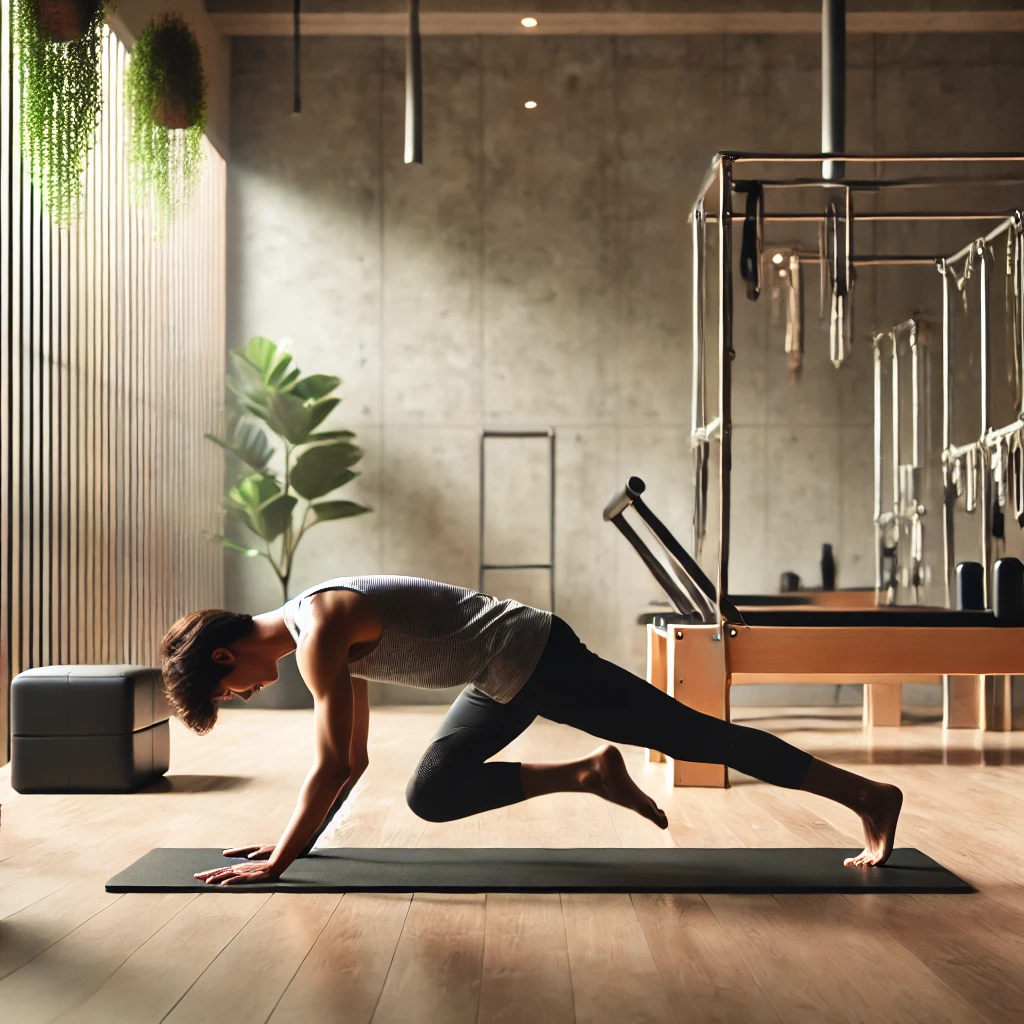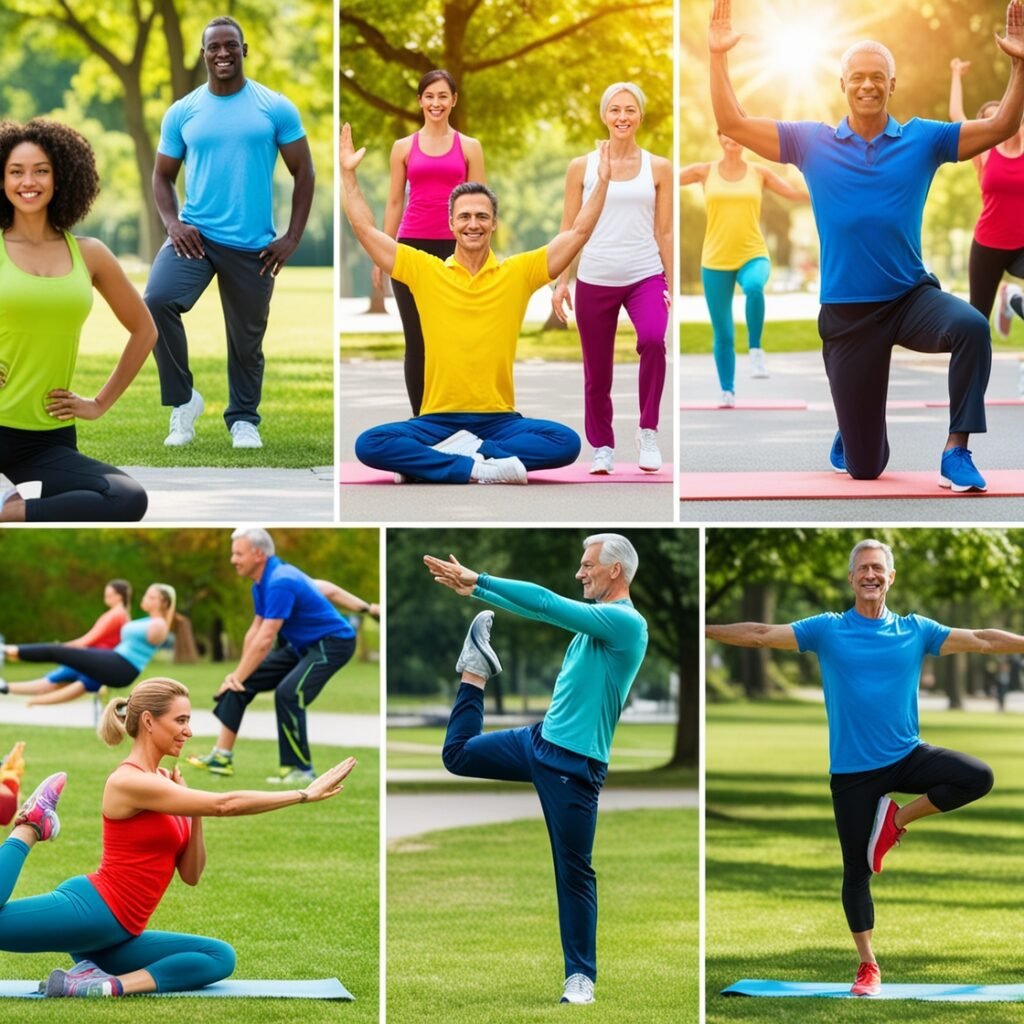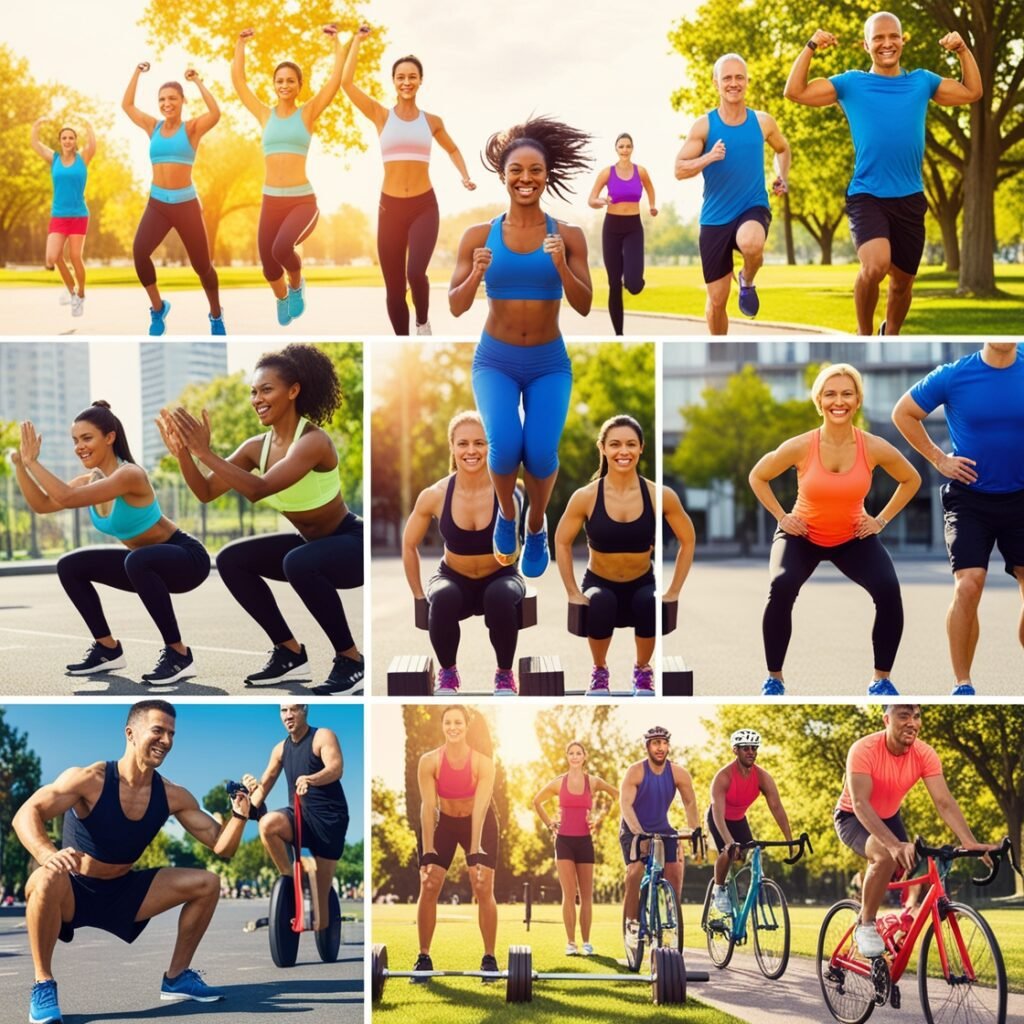Introduction
Pilates has taken the fitness world by storm, becoming a go-to workout for people of all ages and fitness levels. It’s much more than a fitness trend; it offers a holistic approach to physical and mental well-being, making it a staple for anyone looking to improve their posture, core strength, and overall body mechanics.
This comprehensive guide will explore everything about this type of exercise, from its history and benefits to how you can get started, with expert tips to help you maximize your results.
Table of Contents
What is it?
At its core, Pilates is a low-impact exercise that focuses on muscular strength, flexibility, and endurance. Unlike high-intensity workouts, Pilates involves precise movements that target smaller, stabilizing muscles. The main goal is to create balance and alignment in the body by emphasizing core strength.
It can be performed on a mat or using specialized equipment, such as the Reformer, Cadillac, and Wunda Chair. The method focuses on controlled, flowing movements that engage your mind and body simultaneously, fostering better movement patterns and posture.
History of Pilates
Joseph Pilates, a German physical trainer, developed the Pilates method during the early 20th century. Initially known as “Contrology,” it was created as a rehabilitation system for soldiers during World War I. Joseph later moved to the U.S. in the 1920s, where he opened a fitness studio in New York, and his techniques were widely adopted by dancers and athletes.
Over the decades, it has evolved into a mainstream fitness practice, thanks to its versatility and proven health benefits.
Key Benefits
Pilates offers a wide array of health benefits, both physical and mental. Whether you’re an athlete or a complete beginner, here are some core benefits of practicing Pilates regularly:
Physical Benefits
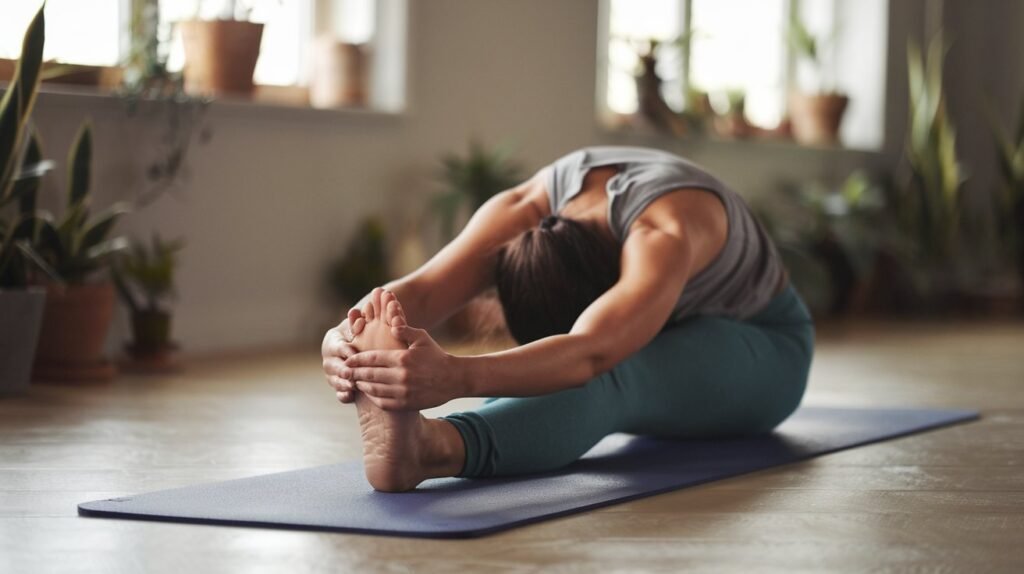
| Benefit | Description |
|---|---|
| Core Strength | It focuses on the deep abdominal muscles, improving core stability and strength. |
| Improved Flexibility | By stretching and lengthening muscles, it increases overall body flexibility. |
| Better Posture | Strengthening the muscles around the spine helps correct posture and alleviate back pain. |
| Enhanced Muscle Tone | It uses controlled movements to sculpt and tone muscles without bulk. |
| Injury Prevention | It improves balance, coordination, and stability, which reduces the risk of injury. |
Mental Benefits
- Increased Mindfulness: It encourages you to focus on the connection between your mind and body.
- Reduced Stress: The breathing techniques used in this exercise promote relaxation, helping to reduce stress and anxiety.
- Improved Focus: It requires concentration and precision, helping to boost mental clarity and focus.
Different Types of Pilates
There are several variations of Pilates, each with unique focuses and benefits. The two primary types are:
- Mat: This is the most common form of Pilates, performed on a mat using body weight and gravity for resistance. It’s accessible and requires minimal equipment.
- Reformer: Performed on a machine called a Reformer, this method uses springs, straps, and pulleys to add resistance and assistance to the exercises. It allows for more advanced movements and deeper muscle engagement.
Additionally, there are other forms, such as clinical Pilates (used for rehabilitation) and contemporary Pilates, which incorporates modern exercises and equipment.
Pilates vs. Yoga: What’s the Difference?
While they share some similarities—both focus on breath control, flexibility, and mindfulness—there are distinct differences between the two practices:
| Aspect | Pilates | Yoga |
|---|---|---|
| Focus | Core strength, stability, and controlled movement | Flexibility, balance, and relaxation |
| Breathing | Coordinated with movement, emphasizing exhalation | Deep, steady breathing (pranayama) |
| Equipment | Uses props like reformers and resistance bands | Mostly mat-based, with optional props like blocks |
| Flow | Precise, controlled movement patterns | Flowing sequences with holds (e.g., Vinyasa) |
Both practices offer immense physical and mental benefits, but Pilates has a specific emphasis on strength and control, particularly in the core region.
How Beginners Get Started
If you’re new, don’t worry—it’s accessible for everyone. Here are some tips to help you get started:
- Start Slow: Begin with beginner-level classes or online tutorials to familiarize yourself with the basics.
- Focus on Form: Proper alignment is critical in Pilates. Pay attention to your form to prevent injury and maximize results.
- Use Props: Don’t hesitate to use props like resistance bands or a Pilates ring to assist you with movements.
- Consistency is Key: Like any fitness routine, consistency is essential for long-term success.
Popular Exercises You Can Try at Home
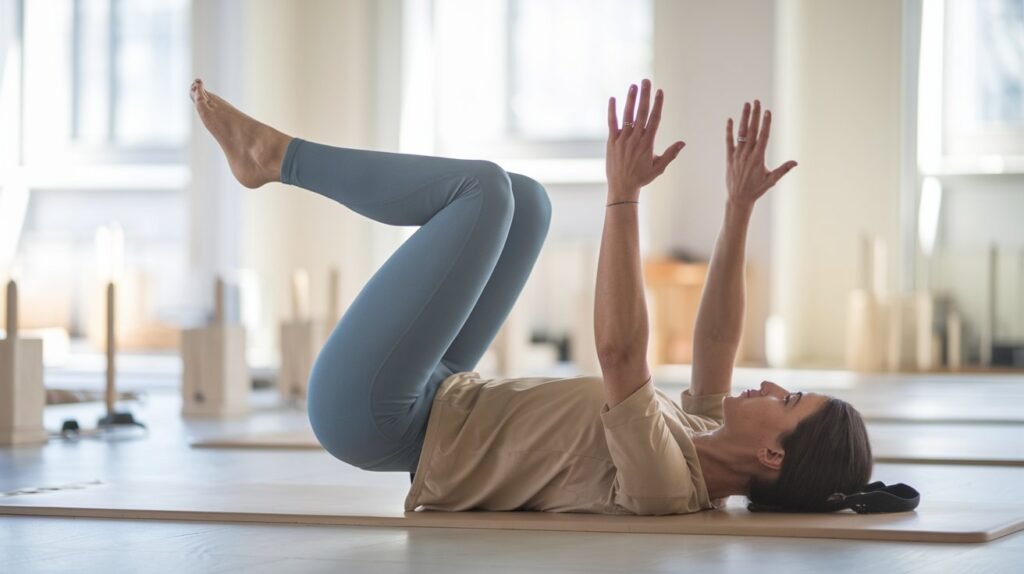
Even if you don’t have access to a studio, you can do many exercises from the comfort of your home. Below are some popular Pilates moves for beginners:
| Exercise | Target Area | How to Do It |
|---|---|---|
| The Hundred | Core and arms | Lie on your back, lift your legs, and pump your arms while engaging your core. |
| Roll-Up | Abs and back | Start lying down, slowly roll up to touch your toes, then lower back down with control. |
| Single Leg Stretch | Core and legs | Lie on your back and pull one knee toward your chest while extending the opposite leg, alternating between legs. |
| Plank Leg Lift | Core and glutes | In a plank position, lift one leg off the ground, hold, and lower, then switch legs. |
Its Role in Injury Rehabilitation
Pilates is widely used in rehabilitation settings due to its low-impact nature and ability to strengthen stabilizing muscles. Physiotherapists often recommend it for individuals recovering from injuries, particularly those involving the back, neck, and knees.
By focusing on controlled movements and proper alignment, Pilates helps to improve mobility, reduce pain, and restore function in injured areas. It also emphasizes posture correction, which is crucial for avoiding further injury.
Its Role in Weight Loss
While Pilates is not typically considered a high-calorie-burning workout, it can be an effective tool for weight loss when combined with a healthy diet and other forms of exercise. It helps tone muscles, improves metabolism, and encourages better movement patterns, which can support weight loss goals.
One study published in the Journal of Physical Therapy Science found that participants who did Pilates three times per week for eight weeks saw a significant reduction in body fat percentage and an increase in lean muscle mass.
How to Incorporate It Into Your Fitness Routine
To get its benefits, consider incorporating it into your existing fitness routine. Here’s how:
- Cross-Train: Combine it with cardio or strength training for a well-rounded fitness plan.
- Stretching: Use it as a form of active recovery on rest days to improve flexibility and reduce muscle soreness.
- Consistency: Aim to practice it two to three times per week for optimal results.
Do You Need Equipment to Practice It?

While you can do it with just a mat, some specialized equipment can enhance your practice. Here’s a breakdown of popular equipment:
| Equipment | Description |
|---|---|
| Reformer | A machine with a sliding carriage, springs, and pulleys that adds resistance to movements. |
| Pilates Ring | A flexible circle that adds resistance to exercises, helping tone muscles. |
| Resistance Bands | Lightweight bands that offer additional resistance, improving strength and flexibility. |
| Foam Roller | Used for balance and muscle release, foam rollers help improve flexibility and relieve muscle tension. |
Common Myths About Pilates
Despite its popularity, there are several misconceptions about it:
Myth 1: It is only for women: It benefits everyone, regardless of gender. Many male athletes use Pilates to improve performance and prevent injuries.
Myth 2: It isn’t a real workout: Although it is a low-impact exercise, it is highly effective at building strength and flexibility.
Myth 3: You need to be flexible to do it: Flexibility is a result, not a requirement!
Real-Life Success Stories
Many individuals have transformed their lives. Here are some inspiring real-life stories:
- Sarah (Age 42): “I started Pilates after a back injury, and not only did it help me recover, but it also improved my posture and core strength. I feel stronger and more confident than ever!”
- Mark (Age 28): “As a runner, I was always dealing with knee pain. Incorporating Pilates into my routine helped strengthen the muscles around my joints, and I haven’t had any issues since.”
Statistics: Why Is It So Popular?
It has grown significantly in popularity over the last few decades. Here are some compelling statistics:
| Statistic | Data |
|---|---|
| Estimated number of people practicing it globally | 12+ million people |
| Percentage of participants who are women | 75% |
| Average number of sessions per week | 2-3 sessions |
| Top countries where it is most popular | United States, Australia, United Kingdom |
It continues to grow as more people discover its benefits for both body and mind.
Conclusion
Whether you’re looking to improve your core strength and flexibility or simply feel better, Pilates offers an array of benefits for people of all ages and fitness levels. By incorporating it into your routine, you’ll enjoy better posture, reduced stress, and a more balanced body. Now is the perfect time to get started. Find a local class or explore online resources to begin your journey!
References
- Pilates Method Alliance. (2023). History of Pilates.
- Journal of Physical Therapy Science. (2016). Effects of Pilates on Body Composition.
- American Council on Exercise (ACE). (2022). Benefits of Pilates for Injury Rehabilitation.


